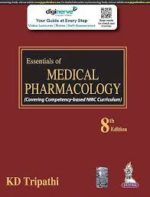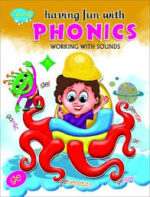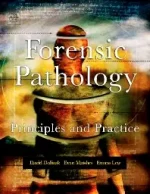-
-
The 30 Day MBA in Marketing: Your Fast Track Guide to Business Success
KShs 1,795.00The 30 Day MBA in Marketing provides a complete marketing ‘course’ spanning twelve disciplinary areas, and including such hot topics as Buyer behaviour, Marketing strategy, Promotion and advertising, Pricing, Managing the marketing organization and Marketing and the law. Each chapter includes at least one practical real life example to illustrate how marketing concepts apply to business decision making. Learn what they teach you on professional marketing courses and at the world’s top Business Schools and why it matters to you; eliminate gaps in your marketing knowledge and take part in business decision making on an equal footing with MBA graduates or your company marketing director. This book includes detailed information on how to find and analyse market data on any business or market anywhere and online appendices that provide an invaluable guide to finding further information and free resources on each topic covered.
-
Unicorn :Activity Sticker Book
KShs 1,295.00Unicorn Activity Sticker Book. Includes over 100 stickers, A range of colouring pages, Dot to dots, Word searches, Mazes and much more.
-
I Have Seen the Promised Land: A Utopian Novella
KShs 395.00This book, a utopian novella set in the year 2026, is part of a trilogy along with The History of the Culture of War and World Peace through the Town Hall: A Strategy for the Global Movement for a Culture of Peace. Together they put forward a comprehensive and feasible plan to achieve world peace. They are based on the author’s responsibility for the United Nations International Year for the Culture of Peace (2000), the Manifesto 2000 signed by 75 million people, and the United Nations Declaration and Programme of Action on a Culture of Peace. This novella foresees the coming collapse of the global economy and nation states as an opportunity to refound the United Nations on the basis of those who understand the need for a culture of peace: individuals, civil society organizations and local governments. It provides an imaginative and personalized account of how the world has come to a culture of peace and explores the various contradictions involved.
-
Essentials of Medical Pharmacology
KShs 9,960.00This new edition is a complete guide to medical pharmacology for students. The eighth edition has been fully revised to provide the latest advances in the field. New drugs and the latest treatment guidelines have been added. Most chapters conclude with an exercise in therapeutic decision making and topics are extensively referenced. The text is highly illustrated with figures, charts and tables, and includes comprehensive appendices. Previous edition (9789350259375) published in 2013.
-
Peppa Pig: My Mummy & Me
KShs 695.00Mummy Pig is Super Mummy!
Peppa and George love doing everything with their mummy. Racing on their scooters, making craft projects, dressing up and having fun together at soft play. Peppa’s mummy can do ANYTHING.
The perfect Mother’s Day present for Mummy Pigs and little readers everywhere! A wonderful read for a snuggly bedtime story, this book will make the whole family smile!
-
151 JUNGLE TALES
KShs 895.00one of the leading children’s bookstores with a vast portfolio of children books in diverse categories like Fairy Tales, Bedtime Stories, Magical Tales and Academic Textbooks.
Our aim is to make reading a bit more interesting and exciting for each child globally. And this is what led us to design cool and fun books with vibrant illustrations and easy-to-understand concepts that children love to read.
We always try our best to provide best customer satisfaction by catering fast and safe delivery, user-friendly customer service, ultra-secure payment methods, and exciting offers with each book.
We also cater to B2B and B2C deals with the intention of long-term and happy relationships.
-
Having Fun With Phonics 5
KShs 695.00This is another workbook in phonics series to learn 2 letter & 3 letter vowel & consonant sounds along with walls, digraphs, mixed letters, syllables, suffix, sight words.
-
Bruce & Borg’s Psychosocial Frames of Reference Theories, Models, and Approaches for Occupation-Based Practice-4th Edition
Psychosocial health is a fundamental element of all human health and well-being. Psychological, emotional, and social factors interact to influence peoples’ occupational lives, in turn influencing psychosocial health. Occupational therapists practicing in contemporary health and social sectors require the knowledge, attitudes and skills to identify and address these psychosocial factors.
The classic and renowned, Bruce & Borg’s Psychosocial Frames of Reference: Theories, Models, and Approaches for Occupation-Based Practice, Fourth Edition by Drs. Terry Krupa, Bonnie Kirsh, and their contributors, examines psychosocial models of practice and their application across a wide range of practice areas in occupational therapy, instead of being singularly focused on practice areas of the needs of people living with identified mental illnesses. Efforts have been made to highlight the relevance of specific models to practice for people with mental illnesses, particularly where the issues experienced by this group have historically been poorly addressed. The authors have also organized models and practice approaches according to the level at which they intervene to create change – occupation, person, environment, and transdisciplinary levels.
As their central domain of concern, the first group of occupational models or approaches have a focus on “what people do” in their daily lives. A second group of models reflect those that intervene at the level of the person. This group understands strengths and problems in occupation as evolving largely from features or qualities of the individual, and the therapeutic processes suggested are directed to changing or building upon these features. A third group of models and approaches focus on the psychosocial context and environment to elicit and enable a positive change in occupation. In some cases, these environmental models expand commonly-held, narrow definitions of “clinical” practice to encourage occupational therapists to engage in population-level practices. Finally, a small group of models of practice are labeled as transdisciplinary. Transdisciplinary models provide ways to develop conceptualizations of psychosocial practice issues, practice language, and approaches that are shared across disciplinary boundaries.
New in the completely updated Fourth Edition:
Contains models and practice approaches that are useful in enabling occupational therapists to address psychosocial concerns relevant to human occupation
Explores the psychological, emotional, and social experiences of humans carried out in context and their linkages to occupational engagement and well-being
Puts forward practice models that focus on person-level aspects of occupation in psychosocial practice
Examines transdisciplinary models and their relationship to psychosocial occupational therapy concepts and practices
Presents well established models and frameworks that focus on population and contextual level factors relevant to psychosocial occupational therapy practice
Discusses occupational therapy intervention approaches flowing from these models, relevant tools and practices, and, where available, the supporting evidence-base
Included with the text are online supplemental materials for faculty use in the classroom.With its updated models and a wide range of practice areas, Bruce & Borg’s Psychosocial Frames of Reference: Theories, Models, and Approaches for Occupation-Based Practice, Fourth Edition is the perfect resource for the occupational therapist student, faculty, and clinician or any practitioner in psychosocial and mental health.
-
Forensic Pathology Principles and Practice
KShs 60,000.00Forensic Pathology is a comprehensive reference that uses a case-oriented format to address, explain and guide the reader through the varied topics encountered by forensic pathologists. Developed in response to a severe void in the literature, the book addresses topics ranging from medicolegal investigation of death to death scene investigation, forensic autopsy, and artifacts of resuscitation as well as complications of medical therapy, forensic osteology, forensic odontology, forensic photography, and death certification. The book includes various types of cases, including sudden natural death, asphyxia, motor vehicle collisions, death in custody, child abuse and elder abuse, acute psychiatric and emotional deaths, and pregnancy. It contains sample descriptions of pathological lesions which serve to aid pathologists in reporting their findings to law enforcement agencies, attorneys, and others involved in investigations of sudden death. The concepts outlined in the text are beautifully illustrated by large, colorful photographs. There are also “Do and Don’t” sections at the end of each chapter that provide guidance for handling the types of cases examined. This work will benefit not only experienced forensic pathologists, but also hospital pathologists who occasionally performs medicolegal autopsies; doctors in training; medical examiners; law enforcement personnel; crime scene investigators; attorneys; and fellows and students of the medical sciences.










